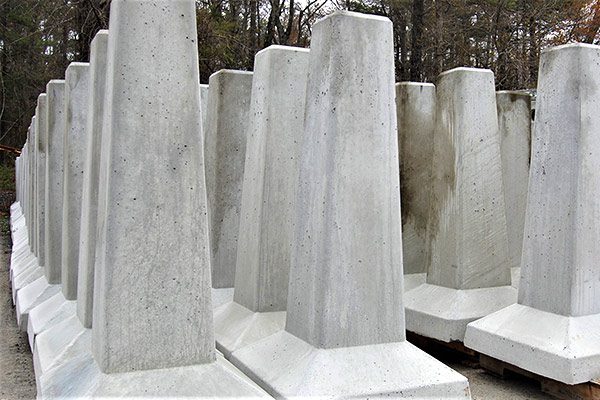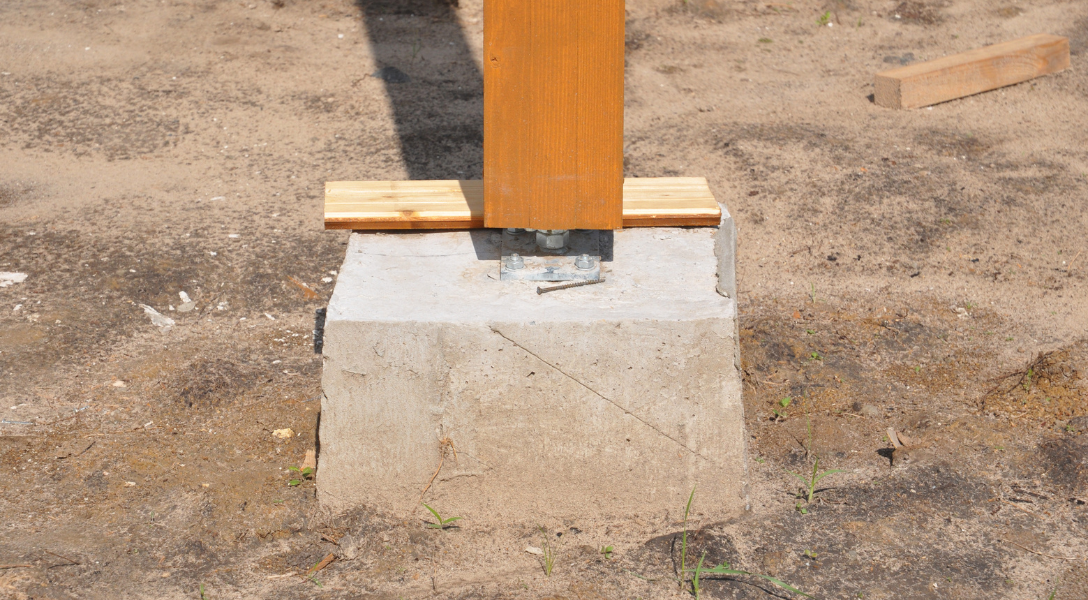Crucial Tips for Solid Deck Footing: A Comprehensive Guide
Constructing a deck is an investment that requires mindful planning and focus to information, specifically when it comes to the footing. This guide will certainly cover important elements such as choosing the right products, assessing dirt problems, calculating tons ability, identifying correct ground depth, and accomplishing specific installation. Let's dive right into the globe of solid deck ground and develop a structure you can depend on.
Picking the Right Deck Footing Materials
When selecting the appropriate deck footing materials, it is vital to think about the details needs and needs of your job. The top quality and resilience of the footings straight influence the security and long life of the deck framework. When picking deck ground products., there are a number of variables to take into consideration.
One important consideration is the type of soil in your area. Various dirt kinds have differing load-bearing abilities and water drainage properties. Clay soils have a tendency to retain water, while sandy soils drain promptly. Understanding your dirt conditions will certainly help you choose footings that can efficiently sustain the weight of the deck and protect against issues such as sinking or heaving.
One more element to consider is the environment in your area. Extreme temperatures, moisture degrees, and freeze-thaw cycles can influence the performance of deck footings. In cold environments, as an example, frost heave can create footings to fracture or change. In such instances, using frost-resistant products or setting up footings listed below the frost line can help minimize these dangers.
Furthermore, the dimension and style of your deck need to likewise affect your option of footing materials. Larger or even more complex decks might require deeper or enhanced footings to guarantee ample support. Understanding the certain load demands of your deck will help you establish the proper materials to make use of.
Ultimately, picking the right deck ground materials entails careful factor to consider of factors such as soil conditions, climate, and deck layout. By taking these elements right into account, you can pick footings that give the required assistance, enhance the security of your deck, and ensure its durability.
Effectively Evaluating Dirt Problems
To effectively assess soil conditions for your deck ground, it is crucial to thoroughly evaluate the load-bearing capabilities and water drainage buildings of the soil in your area. Understanding the soil's ability to bear weight and its capability to drain excess water will certainly assist make certain the security and longevity of your deck.
When evaluating the load-bearing capability of the soil, it is essential to consider factors such as soil thickness, compaction, and kind. Different soil types have varying load-bearing abilities, with compressed dirts generally providing far better assistance than sandy or loose dirts. Conducting a soil test can supply useful details concerning the dirt's ability to support the weight of your deck.
Furthermore, reviewing the drainage properties of the soil is important to protect against water accumulation and prospective damages to your deck - Deck Footings. Poor drainage can result in moisture accumulation, which can damage the foundation and create architectural concerns. It is very important to evaluate the soil's ability to drain water properly to stay clear of these problems
Consulting with a specialist engineer or soil specialist can substantially aid in properly analyzing soil problems for your deck footing. They can offer expert suggestions and advice, ensuring that you select the ideal ground design and products based on the certain attributes of the dirt in your area. Taking the time to extensively evaluate dirt conditions will aid you build a sturdy and solid deck.
Computing Tons Capacity for Grounds
One important action in making sure the stability of your deck is to properly calculate the load ability for your grounds. Deck Footings. The tons capacity describes the maximum quantity of weight or lots that the grounds can securely sustain without creating any resource type of architectural damages or failing. Computing the lots capacity for grounds includes considering numerous variables such as the size and sort of grounds, the sort of soil, the measurements and weight of the deck, and the live tons and dead lots that the deck will go through
To determine the load ability, it is very important to consult neighborhood building ordinance and regulations as they give particular guidelines and demands for deck building. These codes think about aspects such as soil bearing ability, frost depth, and minimal ground measurements. Furthermore, it is essential to involve the services of an expert specialist or a structural engineer that can perform the necessary estimations and analyses to ensure the security and stability of the deck.
When computing the lots capability, it is important to accurately establish the real-time lots and dead tons that the deck will certainly experience. The live load describes the weight of individuals, furniture, and any type of various other products that will certainly be positioned on the deck, while the dead load browse this site refers to the weight of the deck itself. By accurately establishing these loads and considering all relevant factors, you can make sure that your footings are adequately developed to support the weight and preserve the security of your deck.
Making Sure Appropriate Footing Depth
Correct ground depth is vital for making sure the security and durability of your deck. The deepness at which the grounds are installed directly impacts the structural honesty of the deck, as it determines just how well the grounds can resist the pressures exerted by the deck and the dirt beneath it.
When identifying the proper footing deepness, a number of aspects need to be thought about. In areas with large clay dirt, deeper grounds may be necessary to give ample index assistance.
To determine the proper ground depth, it is suggested to speak with an architectural engineer or structure assessor who can assess the certain problems of your site and provide advice based on local building regulations and guidelines. They will certainly take into consideration factors such as soil structure, groundwater level degree, and expected tons to establish the minimum required footing depth.
Setting Up Footings With Precision
Mounting grounds with accuracy is essential for guaranteeing the stability and structural stability of your deck. Properly set up grounds give a strong foundation, ensuring that your deck can hold up against the weight of furnishings, people, and various other loads. To mount grounds with accuracy, there are several essential actions to follow.
First of all, it is important to precisely note the location of each ground. This can be done by utilizing a string or chalk line to create a clear outline. By gauging and marking the specific settings, you can ensure that the footings are evenly spaced and straightened.
Next, you require to dig the holes for the grounds. It is important to dig them to the appropriate deepness and diameter, as defined by neighborhood building regulations and policies. This will certainly offer sufficient assistance and protect against the deck from sinking or moving over time.
When the holes are dug, it is essential to level and small the soil at the end of each hole. This will certainly produce a stable base for the ground to remain on and avoid any settling or movement.
After preparing the openings, you can proceed with putting the concrete. Utilize a concrete mix that is appropriate for footings and adhere to the supplier's instructions for blending and pouring. Guarantee that the concrete fills the openings completely and is level with the ground surface area.
Last but not least, allow the concrete to treat properly before waging the construction of your deck. This will make sure that the grounds are steady and solid, giving a secure foundation for your deck.

Verdict
In verdict, making certain strong deck ground is crucial for the stability and longevity of a deck structure. By choosing the suitable footing materials, evaluating soil conditions, calculating tons capability, and setting up footings with precision, the risk of structural failing can be decreased. Adhering to these essential tips will certainly aid develop a solid structure for any type of deck project.
Understanding your soil problems will certainly assist you select footings that can successfully support the weight of the deck and avoid issues such as sinking or heaving.
Consulting with a specialist designer or dirt specialist can greatly aid in effectively evaluating dirt conditions for your deck ground. Calculating the lots capability for grounds includes considering numerous elements such as the dimension and type of grounds, the type of soil, the measurements and weight of the deck, and the online lots and dead tons that the deck will certainly be subjected to.
